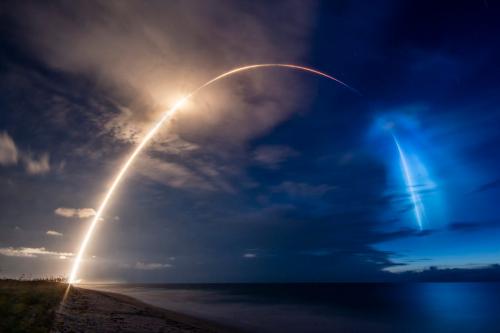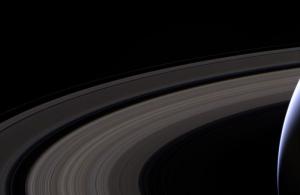Celebration of Space - June 26, 2020
At 4:18 pm ET today (June 26, 2020) SpaceX will launch another set of Starlink satellites into orbit. This launch will include modified Starlink satellites, addressing recent causes for concern in the astronomy community due to how unexpectedly bright they are. The modifications include a deployable visor which will block sunlight from striking the most reflective areas of the satellite. The idea is to reduce the amount of sunlight that is reflected back to Earth. Though quite impressive to witness, like a series of bright star-like objects marching across the sky, the satellites have been quite intrusive on astronomical research and imaging. The modified satellites will deploy about 92 minutes after launch. We will attempt to observe the satellites tonight at Frosty Drew Observatory, if they are in the correct orbital position for viewing. Regardless, you can watch the launch live from the Kennedy Space Center this afternoon, compliments of SpaceX.
In one week, July 3, 2020, Comet C/2020 F3 NEOWISE will reach perihelion, its closest point to the Sun. This past Monday, June 22, 2020, the comet appeared on the SOHO LASCO C3 monitor, and tracking the comet’s perihelion has begun. Currently Comet NEOWISE has brightened to magnitude 2.2, which is well into the naked eye visibility range. Though the comet is quite close to the Sun as it is approaching perihelion, making it too close to the Sun to view. There is still a possibility of the comet not surviving its perihelion passage, though at this time, the comet is looking good. After the comet passes perihelion it will begin moving towards Earth, with its closest approach happening on July 23, 2020. As that date approaches and passes, we could be in store for spectacular views of the Comet F3! Check out the latest sequence from SOHO of the comet approaching the Sun, as well as the latest image of the comet approaching the Sun, and get excited for another hopeful comet of 2020.
Now that Jupiter and Saturn are rising within the hour after sunset, views of the stunning outer planets are happening during Frosty Drew events. Considering that Saturn and Jupiter are in conjunction this entire year, fabulous views are just getting started. At this time, our views of the bright planets will start near 10:00 pm, and will increasingly become earlier with each passing night. Viewing Jupiter in the Frosty Drew 16” telescope will give you a view of the four Galilean Moons, Jupiter’s equatorial bands, storms in Jupiter’s atmosphere, and the Great Red Spot – when in view. Observing Saturn in our telescope will present you a view of up-to six of Saturn’s moons, Saturn’s equatorial bands, and of course those amazing rings! So make plans to visit Frosty Drew Observatory this summer – December and see these unforgettable views for yourself!
- Author:
- Scott MacNeill
- Entry Date:
- Jun 26, 2020
- Published Under:
- Scott MacNeill's Columns




